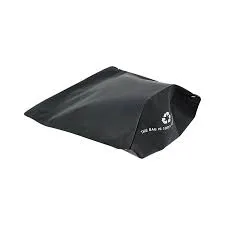- Afrikaans
- Albanian
- Amharic
- Arabic
- Armenian
- Azerbaijani
- Basque
- Belarusian
- Bengali
- Bosnian
- Bulgarian
- Catalan
- Cebuano
- chinese_simplified
- chinese_traditional
- Corsican
- Croatian
- Czech
- Danish
- Dutch
- English
- Esperanto
- Estonian
- Finnish
- French
- Frisian
- Galician
- Georgian
- German
- Greek
- Gujarati
- haitian_creole
- hausa
- hawaiian
- Hebrew
- Hindi
- Miao
- Hungarian
- Icelandic
- igbo
- Indonesian
- irish
- Italian
- Japanese
- Javanese
- Kannada
- kazakh
- Khmer
- Rwandese
- Korean
- Kurdish
- Kyrgyz
- Lao
- Latin
- Latvian
- Lithuanian
- Luxembourgish
- Macedonian
- Malgashi
- Malay
- Malayalam
- Maltese
- Maori
- Marathi
- Mongolian
- Myanmar
- Nepali
- Norwegian
- Norwegian
- Occitan
- Pashto
- Persian
- Polish
- Portuguese
- Punjabi
- Romanian
- Russian
- Samoan
- scottish-gaelic
- Serbian
- Sesotho
- Shona
- Sindhi
- Sinhala
- Slovak
- Slovenian
- Somali
- Spanish
- Sundanese
- Swahili
- Swedish
- Tagalog
- Tajik
- Tamil
- Tatar
- Telugu
- Thai
- Turkish
- Turkmen
- Ukrainian
- Urdu
- Uighur
- Uzbek
- Vietnamese
- Welsh
- Bantu
- Yiddish
- Yoruba
- Zulu
Innovative Food Presentation Solutions with Customizable Paper Trays for Culinary Experiences
The Rise of Paper Trays for Food An Eco-friendly Solution
In recent years, the global concern for environmental sustainability has reached unprecedented levels. Among the various initiatives aimed at reducing waste and promoting green practices, the food service industry has made significant strides in adopting biodegradable alternatives to traditional plastic products. One such innovation that has garnered attention is the use of paper trays for food. These trays, crafted from renewable fibers, present an eco-friendly solution that benefits the environment, enhances food presentation, and meets consumer demand for sustainable practices.
The Environmental Benefits of Paper Trays
Plastic pollution is a pressing issue that has led to the degradation of oceans, harm to wildlife, and a growing landfill crisis. In response to this challenge, businesses are increasingly seeking alternatives that minimize their ecological footprint. Paper trays offer a sustainable option as they are typically made from recycled paper or responsibly sourced virgin fiber. These trays are biodegradable, meaning they can break down naturally over time, reducing the accumulation of waste in landfills.
Moreover, the production process for paper is often less harmful to the environment compared to that of plastic. With advancements in technology, the manufacturing of paper trays has become more efficient and less resource-intensive. Many companies are now utilizing renewable energy sources in their production processes and employing sustainable forestry practices to ensure a minimal impact on the environment.
Versatility and Functionality
Paper trays are not only eco-friendly but also highly versatile and functional. They come in various sizes and designs, making them suitable for a wide range of food items, from fast food products to gourmet meals. Their lightweight nature allows for easy handling and transport, which is particularly beneficial for food vendors and home delivery services.
Additionally, paper trays can be coated with water-resistant barriers to prevent leaks and ensure that they can hold wet or greasy foods without compromising their integrity. This adaptability encourages restaurants and cafes to rethink their presentation methods while still upholding stringent food safety standards.
paper trays for food

Enhancing Food Presentation
The aesthetic appeal of paper trays is another significant advantage. With a variety of colors, patterns, and sizes available, food businesses can create visually appealing presentations that resonate with their brand identity. Customized paper trays allow restaurants to showcase their logo and slogan, reinforcing brand awareness while promoting sustainability.
Furthermore, consumers are becoming increasingly aware of the environmental impact of their choices and are often willing to pay a premium for products that prioritize sustainability. By using paper trays, businesses can enhance their reputation as environmentally responsible entities and attract a growing demographic of conscious consumers.
Challenges and Considerations
While the benefits of paper trays are clear, there are challenges to consider. The cost of raw materials and production may be higher than that of plastic alternatives, posing a financial hurdle for some businesses, particularly small food vendors. Additionally, concerns about moisture resistance and structural integrity in certain applications need to be carefully addressed through continuous innovation and material advancements.
To ease the transition to paper trays, businesses can explore bulk purchasing options and partnerships with manufacturers that prioritize sustainable practices. Education and outreach efforts to inform consumers about the benefits of paper trays can also help shift public perception and acceptance.
Conclusion
The adoption of paper trays for food reflects a growing commitment to environmental sustainability within the food service industry. By prioritizing eco-friendly materials and innovations, businesses can reduce their environmental impact while simultaneously enhancing food presentation and consumer appeal. As awareness of ecological issues continues to rise, the future of food service is likely to see even more creative and sustainable packaging solutions, with paper trays leading the charge. Ultimately, the shift towards paper trays not only encapsulates a necessary response to plastic pollution but also represents a broader movement towards a more sustainable and responsible way of consuming food.













